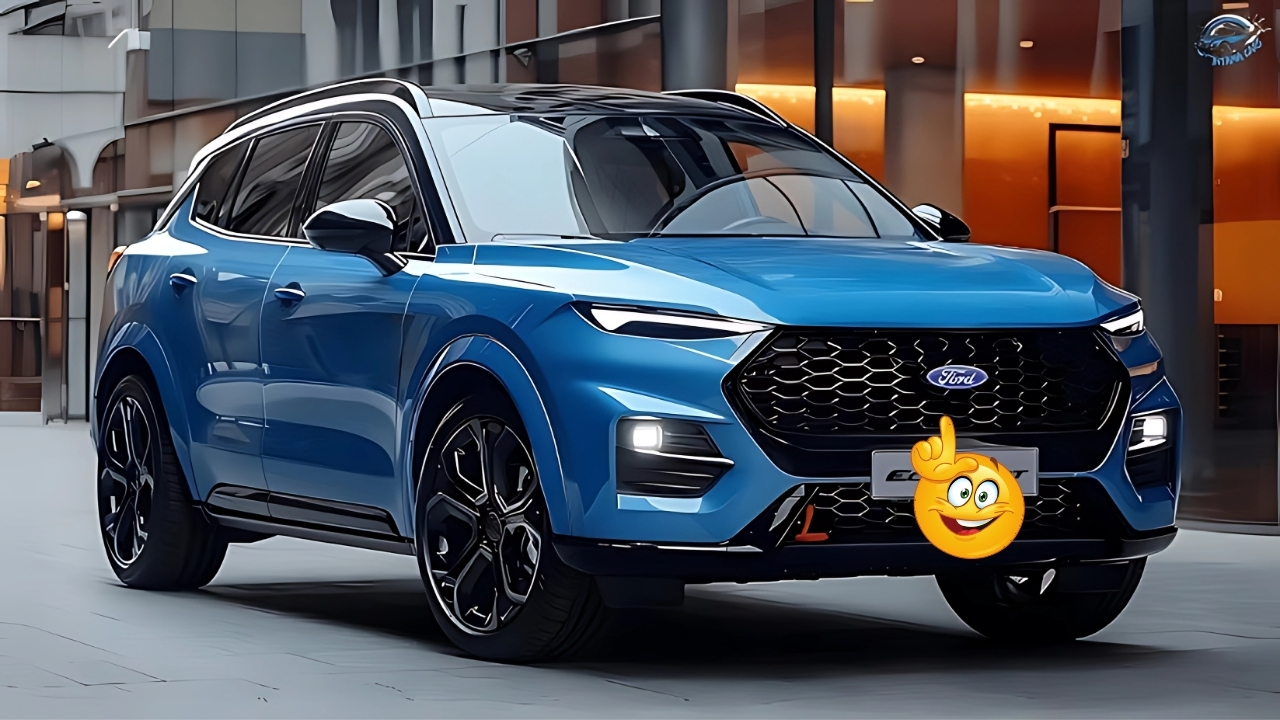Ford EcoSport: Not just a vehicle that also helped create the compact SUV segment but the one that went on to have such a hand in not only developing a new portion of the market but defining it, as compact SUVs became a staple of sales in almost every other global market.
Throughout its lifetime, this urban-dwelling crossover has provided the commanding driving position and flexibility of an SUV while providing overall dimensions that work well in congested environments.
Table of Contents
Ford EcoSport: Design Philosophy

Thanks to Ford’s global design language, the EcoSport retains a visually appealing look that will continue to find favor with Ford fans as it delivers that look in a relatively compact package.
Its upright form, pronounced wheel arches, and short overhangs convey capability yet remains in proportions suitable for urban space.
A signature styling element that underscored its SUV cred, even in small toep, was found in the rear-mounted spare tire (in certain markets and configurations).
The front fascia usually integrates Ford’s signature trapezoidal grille framed by stadium-shaped headlamps that suggest movement even when the car itself is parked.
The sculpting on the hood adds visual flair while giving the driver an improved sense of spatial awareness — a nice touch that improves everyday usability.
Over its lifecycle the EcoSport has always maintained this basic design balance, delivering updates at regular intervals to keep its looks fresh but never sacrificing the very core characteristics that brought in buyers in the first place.
Interior Experience: Functional Creativity
Inside it becomes clear how the EcoSport makes use of its compact external dimensions through careful packaging.
The higher seating position yields the commanding view of the outside world that draws so many buyers to the SUV segment, and the upright greenhouse delivers an airy, roomy feel that belies the vehicle’s footprint.
Perhaps the most striking aspect of the new dashboard architecture is how intuitive it is to operate, with controls arranged in frequency of use.
A model that evolved from audio systems in cars to infotainment systems with smartphone integration at scale that scored well in consumer expectations but easily to use.
Cabin storage solutions are a clear embrace of the practical realities of how people use their vehicles in their day-to-day lives.
Small to large compartments house everything from smartphones to water bottles and the rear cargo area is perhaps its biggest surprise that adjusts for different carrying needs.
Performance Characteristics: Capability Efficiency
The EcoSport typically boasts Ford’s efficient powertrains under the hood, with many markets receiving the award-winning EcoBoost turbocharged engines that provide spirited performance without compromising respectable fuel economy.
The phasing map nicely fits with the mission of urban utility, giving the power for merging ashes in confidence on freeways whilst providing efficiency to tackle your commute every day.
The transmission choices have also progressed with market taste, from precise manual gearboxes to ever more sophisticated automatic choices that alleviate the tedium in stop-start visitors conditions.
Selected configurations allow for all-wheel drive, adding capability both off paved surfaces for light off-road excursions and more confidence in adverse weather conditions.
Driving dynamics reflect Ford’s traditional strength in chassis tuning, with steering response and body control that engage the drivers rather than leave them as a passive participant that relegates them to the back seat of the they-must-be-have-it luxury utility vehicle experience.
This character has helped set apart the EcoSport from rivals that favor comfort over driver connection.
Market Impact: Category Definition
However, the EcoSport’s biggest strength may have been defining and popularising the compact SUV segment.
It paved the way for a segment that has in turn become key to just about every manufacturer’s portfolio by proving that SUV attributes could successfully migrate to a smaller, more affordable platform.
Its global presence—the model was manufactured and sold in multiple continents—contributed to the model’s spread, exposing different markets to a vehicle that managed to blend urban function with the emotional appeal of traditional SUVs.
This international success established design and engineering benchmarks that competitors would later seek to match as they came into the segment.
Ownership Experience: Practical Implications
The EcoSport’s appeal goes beyond its physical attributes to include ownership considerations that are important to practical car buyers.
Fuel economy is competitive for its class — an important consideration for many buyers moving into the SUV category from smaller vehicles. Ford’s global parts distribution network helps assuage any service availability concerns, ensuring maintenance phase costs are as low as possible.
Safety systems themselves have evolved from basic passive systems to progressively advanced active safety systems designed to prevent accidents and not just to reduce the consequences of a collision, developing in line (and often under pressure) with government regulations and consumer expectations.
Ford EcoSport:
Ford EcoSport was ahead of the curve as consumer tastes moved away from less practical sedans to larger vehicles that offered better utility and road presence without being too big or thirsty.
Its winning formula—mixing small footprints, SUV design and utility—established a pattern now copied throughout the automotive world.
For aspirational urbanites requiring a vehicle that balances city practicality with adventure-suggestive good looks and rational ownership costs, the EcoSport remains a compelling proposition that speaks to its enduring global appeal.





